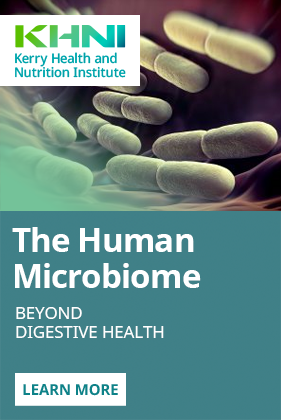Children & Adolescents
This section provides an overview of the nutrition considerations by life stage and need state.
Select a need state below to learn more.

- KEY INSIGHTS
- GROWTH AND DEVELOPMENT
- FOOD INTOLERANCES/ALLERGIES
- BRAIN DEVELOPMENT
- BONE HEALTH
- DIGESTIVE HEALTH
- OBESITY PREVENTION
Children
During the age of four to nine, children grow at a fairly steady rate. This period is often referred to as the latent or quiescent period of growth. Physical growth may be less remarkable and proceed at a steadier pace than it did during infancy; however, these school years are a time of significant growth in the social, cognitive and emotional areas. Proper nutrition is critical to prevent under nutrition and to support growth and development. These years are also a crucial marker and intervention point for childhood obesity.
Adolescents
Adolescence is a period of transition between childhood and adulthood and involves both physical and emotional change. The gradual growth pattern that characterises early childhood changes to one of rapid growth and development, affecting both physical and psychosocial aspects of health. The pubertal growth spurt, which takes place over approximately 3 years, is characterised by rapid growth in height due to the synergistic effects of both sex hormones and growth hormones. Sexual development occurs during adolescence and the onset of the sexual characteristics of puberty is a better marker of the stage of adolescence and nutritional requirements than age. Adolescence can therefore be divided into two categories because development ages can vary hugely between adolescents (9-13 years and 14-18 years).
-
References
Khan NA, Raine LB, Donovan SM, Hillman CH. IV. The cognitive implications of obesity and nutrition in childhood. Monogr Soc Res Child Dev. 2014 Dec;79(4):51-71. doi: 10.1111/mono.12130.
Ogata BN, Hayes D. Position of the Academy of Nutrition and Dietetics: nutrition guidance for healthy children ages 2 to 11 years. J Acad Nutr Diet. 2014 Aug;114(8):1257-76. doi: 10.1016/j.jand.2014.06.001.
Growth and Development
- Adolescence is a period of rapid change both physically, mentally and emotionally. While childhood sees a relatively slower rate of growth, adequate nutrition is still essential
- During adolescence the ability to understand abstract ideas, establish and maintain relationships, and establish autonomy are all developing. As well as these cognitive and emotional changes, the rate of physical change is huge as they move from childhood to physical maturity. Appropriate amounts of essential nutrients are necessary to ensure and sustain an adolescent’s rapid rate of growth and development
- Macronutrients such as protein, carbohydrates and fat are essential to support these energy needs for rapid growth and development
- Micronutrients such as vitamins and minerals are necessary to support tissue growth and ensure appropriate development.
Related Resources
Nutrition for Children and Adolescents is a Balancing Act by Barbara Lyle, PhD
White Paper: Nutrition to Support Optimal Growth and Development in Youth by Barbara Lyle, PhD
-
References
Khan NA, Raine LB, Donovan SM, Hillman CH. IV. The cognitive implications of obesity and nutrition in childhood. Monogr Soc Res Child Dev. 2014 Dec;79(4):51-71. doi: 10.1111/mono.12130.
Ogata BN, Hayes D. Position of the Academy of Nutrition and Dietetics: nutrition guidance for healthy children ages 2 to 11 years. J Acad Nutr Diet. 2014 Aug;114(8):1257-76. doi: 10.1016/j.jand.2014.06.001.
Food Intolerances/Allergies
- The last 40 years have seen a dramatic rise in allergic diseases with evidence suggesting this is associated with westernisation
- Food allergies are not just affecting young children and infants. It is estimated that 1 in 13 children under the age of 18 years has a food allergy
- Lactose intolerance, usually presents itself around the age of five years especially in Caucasian children. Some studies suggest lactose intolerance peaks between the ages of 10 and 16
- With the growing prevalence of allergies and intolerances, hypoallergenic products, which continue to meet the needs of growing children and adolescents are essential. Examples include vegetable protein sources, hydrolysed proteins and enzyme solutions.
Related Resources
What are Food Allergens, and How Are They Labelled Around the World?
-
References
Khan NA, Raine LB, Donovan SM, Hillman CH. IV. The cognitive implications of obesity and nutrition in childhood. Monogr Soc Res Child Dev. 2014 Dec;79(4):51-71. doi: 10.1111/mono.12130.
Ogata BN, Hayes D. Position of the Academy of Nutrition and Dietetics: nutrition guidance for healthy children ages 2 to 11 years. J Acad Nutr Diet. 2014 Aug;114(8):1257-76. doi: 10.1016/j.jand.2014.06.001.
Brain Development
- Inadequate nutrition before birth and during childhood and adolescence can seriously interfere with brain development and lead to neurological and behavioural disorders
- Myelination is the process by which a fatty layer, called myelin, accumulates around nerve cells. Myelination begins in infancy and continues into adulthood, and is essential for healthy brain function
- The brain continues to change and mature during adolescence. An adolescent’s brain reaches the weight of an adult brain by about age fourteen
- Nutrients of critical importance to brain development and function as well as cognitive performance include DHA and ARA i.e. long chain polyunsaturated fatty acids as well as micronutrients such as vitamin E, folic acid, vitamin B12, vitamin B6, choline, iron and zinc.
Related Resources
Nutrition for Children and Adolescents is a Balancing Act by Barbara Lyle, PhD
White Paper: Nutrition to Support Optimal Growth and Development in Youth by Barbara Lyle, PhD
-
References
Khan NA, Raine LB, Donovan SM, Hillman CH. IV. The cognitive implications of obesity and nutrition in childhood. Monogr Soc Res Child Dev. 2014 Dec;79(4):51-71. doi: 10.1111/mono.12130.
Ogata BN, Hayes D. Position of the Academy of Nutrition and Dietetics: nutrition guidance for healthy children ages 2 to 11 years. J Acad Nutr Diet. 2014 Aug;114(8):1257-76. doi: 10.1016/j.jand.2014.06.001.
Bone Health
- A person’s peak bone producing years occur during childhood. Bone health in adulthood depends on bone density acquired during adolescence. Many different nutrients are required for the growth, development and maintenance of healthy bones such as calcium, vitamin D, phosphorous, vitamin K, vitamin A, magnesium and protein
- At birth, the skeleton has only 20-30g of calcium and approximately 150mg of calcium is deposited in the bones each day until the age of 20. If calcium intake is insufficient when bones are developing, they may never reach full strength or peak bone mass
- Vitamin D is also essential for bone health as it increases the absorption of calcium from foods.
Related Resources
Nutrition for Children and Adolescents is a Balancing Act by Barbara Lyle, PhD
White Paper: Nutrition to Support Optimal Growth and Development in Youth by Barbara Lyle, PhD
-
References
Khan NA, Raine LB, Donovan SM, Hillman CH. IV. The cognitive implications of obesity and nutrition in childhood. Monogr Soc Res Child Dev. 2014 Dec;79(4):51-71. doi: 10.1111/mono.12130.
Ogata BN, Hayes D. Position of the Academy of Nutrition and Dietetics: nutrition guidance for healthy children ages 2 to 11 years. J Acad Nutr Diet. 2014 Aug;114(8):1257-76. doi: 10.1016/j.jand.2014.06.001.
Digestive Health
- Once the digestive system has matured, it is essential to maintain a healthy digestive system throughout childhood
- Prebiotics and probiotics may help to establish and maintain a healthy gut microflora, which in turn is beneficial for healthy digestion and support of the immune system
- The intake of dietary fibre and wholegrain is important for children and adolescents to maintain a healthy digestive system as these have been associated with improved digestion by regulating gut function, intestinal transit and gut microbiota.
Related Resources
Nutrition for Children and Adolescents is a Balancing Act by Barbara Lyle, PhD
-
References
Khan NA, Raine LB, Donovan SM, Hillman CH. IV. The cognitive implications of obesity and nutrition in childhood. Monogr Soc Res Child Dev. 2014 Dec;79(4):51-71. doi: 10.1111/mono.12130.
Ogata BN, Hayes D. Position of the Academy of Nutrition and Dietetics: nutrition guidance for healthy children ages 2 to 11 years. J Acad Nutr Diet. 2014 Aug;114(8):1257-76. doi: 10.1016/j.jand.2014.06.001.
Obesity Prevention
- Overweight and obesity is a growing problem among children and adolescents. An overweight child has a 40-70% chance of becoming an obese adult. More than 40 million children under the age of five were overweight or obese in 2012. Therefore, it is essential to manage overweight and obesity in children and adolescents as early as possible
- Factors contributing to excessive caloric intake include increased consumption of sugar-sweetened beverages; increased snacking; larger portion sizes; increased consumption of calorie-dense foods; more exposure to advertising that encourages food consumption and promotes unhealthy foods; and value-sizing of less nutritious foods
- The nutritional management and prevention of obesity involves providing nutrient dense foods to ensure balanced nutrition, monitoring energy balance using calorie control methods as well as a reduction in high sugar, high fat foods to avoid empty calories and increasing physical activity levels.
Related Resources
Moving from Weight Management to Weight Wellness by Barbara Lyle, PhD
Turning Fussy Young Eaters into Foodies by Orlaigh Matthews, RNutr
-
References
Khan NA, Raine LB, Donovan SM, Hillman CH. IV. The cognitive implications of obesity and nutrition in childhood. Monogr Soc Res Child Dev. 2014 Dec;79(4):51-71. doi: 10.1111/mono.12130.
Ogata BN, Hayes D. Position of the Academy of Nutrition and Dietetics: nutrition guidance for healthy children ages 2 to 11 years. J Acad Nutr Diet. 2014 Aug;114(8):1257-76. doi: 10.1016/j.jand.2014.06.001.



